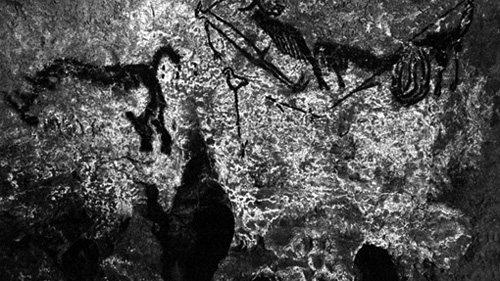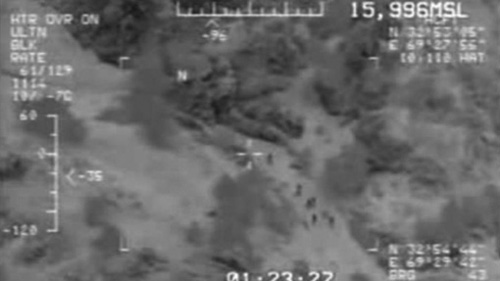Recommended

If you could only choose 100 images to represent our historical moment, pictures that will outlast even human civilization, what would they be? That was the task presented to artist, writer, and trained geographer Trevor Paglen who uses photography, video, data, and other uncommon sources to (as his bio says) "deliberately blur lines between science, contemporary art, journalism, and other disciplines to construct unfamiliar, yet meticulously researched ways to see and interpret the world around us."
The project, called The Last Pictures, was commissioned by Creative Time, a nonprofit group that presents ambitious public-art projects. The idea is to affix the images onto a communications satellite in geosynchronous orbit. Currently, more than 800 of these spacecraft encircle the Earth at an altitude of 36,000 kilometers, far enough away to experience no atmospheric drag and exist in perpetual orbit, even if they are no longer activated. These dead satellites, says Paglen's website, will be "the longest-lasting artifacts of human civilization, quietly floating through space long after every trace of humanity has disappeared from the planet’s surface." It's a bit like the Voyager Golden Records, the LPs containing sounds and images depicting the diversity of life and culture on Earth that were attached to both Voyager space probes in 1977, only these are staying close to home.
Paglen spent five years researching the project. He consulted with philosophers, scientists, engineers, artists, and historians and searched for images from various sources, including Flickr and Google images, stock archives, National Geographic, and museums.

He also spent time as a visiting artist at MIT, where he researched ultra-archival materials and aerospace design. He collaborated with Associate Professor Karl K. Berggren of the MIT Research Lab for Electronics; Associate Professor Brian L. Wardle SM '95, PhD '98 from the Department of Aeronautics and Astronautics; and grad student Adam McCaughan '07, MNG '10 from the Quantum Nanostructure and Nanofabrication Group to explore materials and fabricate a lightweight, encodable, ultradurable silicon wafer etched with images using specialized equipment in the Quantum Nanostructure and Nanofabrication lab at MIT. Watch video below recorded during his time at the Institute.
In an interview in this month's issue of e-flux, Paglen comments on the project's absurdity (his word) and paradoxes: that he doubts these images will ever be found or even be able to be interpreted if they are. The book containing the images are accompanied by explanatory captions, but images on the disc in orbit are not. So they are "essentially meaningless," he admits. But he does acknowledge the deep responsibility these images carry with them.
"I often think about the project as an exquisitely human construction, containing traces of stories, emotions, impressions, and ideas. The object then goes into space, and the pictures—little bits of congealed humanity—then orbit the earth forever, and the pictures will watch the earth transform, evolve, and ultimately end. In this scenario, the pictures aren’t representations or messages so much as little traces of humanity that will watch the earth when we are gone." —Trevor Paglen in e-flux

The Last Pictures will be attached to the communications satellite EchoStar XVI, which was slated to launch this month though a rocket failure in August will likely delay it. The pictures are also available in a book and some are also on Creative Time's website.

Tonight, at Bryant Park in New York City, Paglen will talk with filmmaker Werner Herzog about cultural artifacts, space exploration, the legacy of human civilization, and the images included in The Last Pictures. Pulitzer-prize-winning poet Tracy K. Smith will also give a reading. Later in the fall, he'll be speaking at New York's Metropolitan Museum of Art.
The video above was shot while Paglen was a visiting artist at MIT, in 2011. Paglen has a PhD in geography from U.C. Berkeley and an MFA from the Art Institute of Chicago. He's written five books and numerous articles on subjects including experimental geography, state secrecy, military symbology, photography, and visuality.







